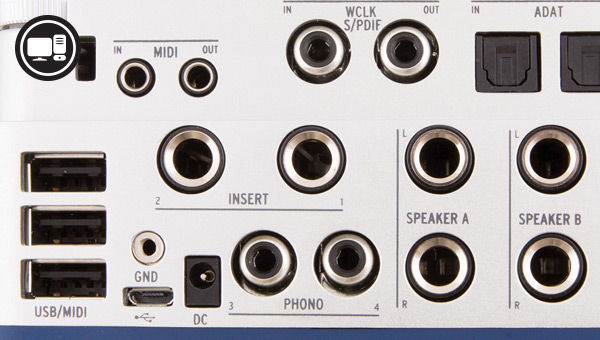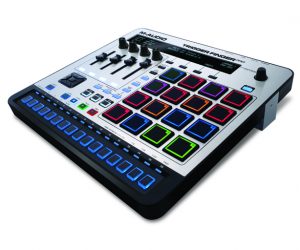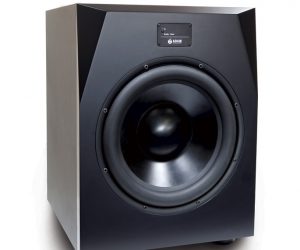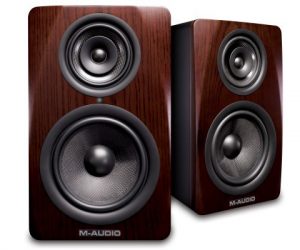
PC AUDIO 114

Solving USB confusions when connecting your PC to audio/MIDI devices.
Column: Martin Walker
The Universal Serial Bus (USB) has proven really useful for the PC musician, but there are now so many different inter-gear connections that it can also get confusing. USB devices essentially start out as one of two types. Those with rectangular-shaped USB Type-A ports are host devices, including PCs and some Macs. They’re also found on USB hubs, and in many cases are also able to supply USB ‘bus’ power to devices plugged into them. Meanwhile, the humbler USB peripherals including many audio and MIDI interfaces, USB-equipped keyboards/synths, and boring devices like printers and scanners sport squarish USB Type-B ports with two slightly bevelled top corners.
As electronic devices shrunk, Type-B ports were too bulky to fit, so a miniaturised USB Mini-B connector started to appear on many portable audio recorders, audio/MIDI interfaces, digital cameras, phones and so on. The most popular amongst audio manufacturers is the Mini-B 5-pin version. Confusingly there is also a 4-pin version, but thankfully the two are different sizes and shapes so you can’t accidentally plug in the wrong cable. A set of even smaller ‘micro’ sized B-connectors appeared for modern mobile phones, but these don’t tend to be found on many audio/MIDI devices.
So, the majority of USB scenarios start out requiring a USB cable with a Type-A plug on one end to plug into your computer or hub, and a Type-B plug on the other that plugs into your peripheral device.
I GOT THE POWER!
A to B connections neatly avoid possible overloads or electrical damage, since power can only travel from a Type-A to Type-B port. Where you can run into problems is if you attempt to connect two computers together via USB to transfer files between them or create a network to share your internet connection. Yes, you can buy Type-A to Type-A cables, but if you plug both ends into different computers this could either burn out their USB ports or even damage your computer power supply. For this application you instead need a special more expensive ‘bridged’ or ‘USB networking’ cable.
Even with an apropriate A to B connection, it can be a bit hit ’n’ miss powering audio/MIDI devices, since only so much juice will be available from each Type-A port. Mains-powered synths/controllers/interfaces won’t need any power from your PC or USB hub, so they’re fine. If you’re connecting your USB-powered audio or MIDI device to a desktop PC, chances are there’s plenty of power available too — a typical Type-A USB port will supply up to 500mA.
It’s when you connect an Audio/MIDI device to a battery-powered laptop/notebook (or tablet) that things can become hit and miss. If there’s not enough power available from that host then it simply won’t power up or be properly recognised. With all battery-powered host devices, adding a powered USB hub between it and the USB peripheral will invariably let the latter be recognised, if that doesn’t defeat the object of your setup being battery-powered.
MULTI-HOST SHENANIGANS
Where things can get really confusing is with the new breed of Multi-host standalone USB Audio/MIDI devices. As well as traditional audio/MIDI inputs and outputs, they can also serve as a glorified central hub with complex routing options between all your MIDI instruments/controllers, mobile devices, and a simultaneously-connected Mac and PC — this can be a truly liberating experience! It’s easy to get thoroughly confused by the possibilities at first, but the important thing to remember is that Type-A ports (often labeled Host) on such standalone MIDI/Audio interfaces are the ones that may supply power to peripheral devices, so should be connected to MIDI instruments and controllers.
Any Type-B ports are designed to be connected to PC or Mac computers via a standard USB B to A cable, or via a special (and often supplied) USB B to Lightning cable to connect an iOS device. If you plug in the Multi-host mains PSU, one of these USB Type-B sockets may also be able to supply sufficient juice to charge a connected iOS device, so you no longer need to periodically unplug it when its battery finally runs down.
Another Type-B port on the same multi-host device may instead accept USB bus power from your PC or Mac when you don’t want to use the Multi-host PSU. You need to carefully read the manual to find out what options are on offer. Such Multi-host devices also generally offer internal audio/MIDI patchbays controlled by Mac/PC software, so you can route audio and MIDI signals between your various computer and MIDI-based gear. The possibilities can be mind-boggling!
USB 3.0 AND C-TYPE
Since I’ve been discussing the various USB connectors, I ought to conclude by mentioning the other USB standards you may stumble across in your travels. Those new-fangled USB 3.0 and 3.1 SuperSpeed devices with their own modified Type-A and Type-B connectors still follow the same rules as those designed for USB 1.1 and USB 2.0 duties, although we don’t see very many audio interfaces still featuring those ports.
The most recent USB C-Type ports potentially confuse matters by featuring the same rounded-rectangular reversible-plug connectors at each end of their cables, which can plug into either a USB-C host or peripheral with no worries about potential damage. However, USB C-Type devices can also be connected with devices of all the previous USB standards using a cable with USB C-Type at one end and Type-A or Type-B at the other. Standards, eh?
















RESPONSES